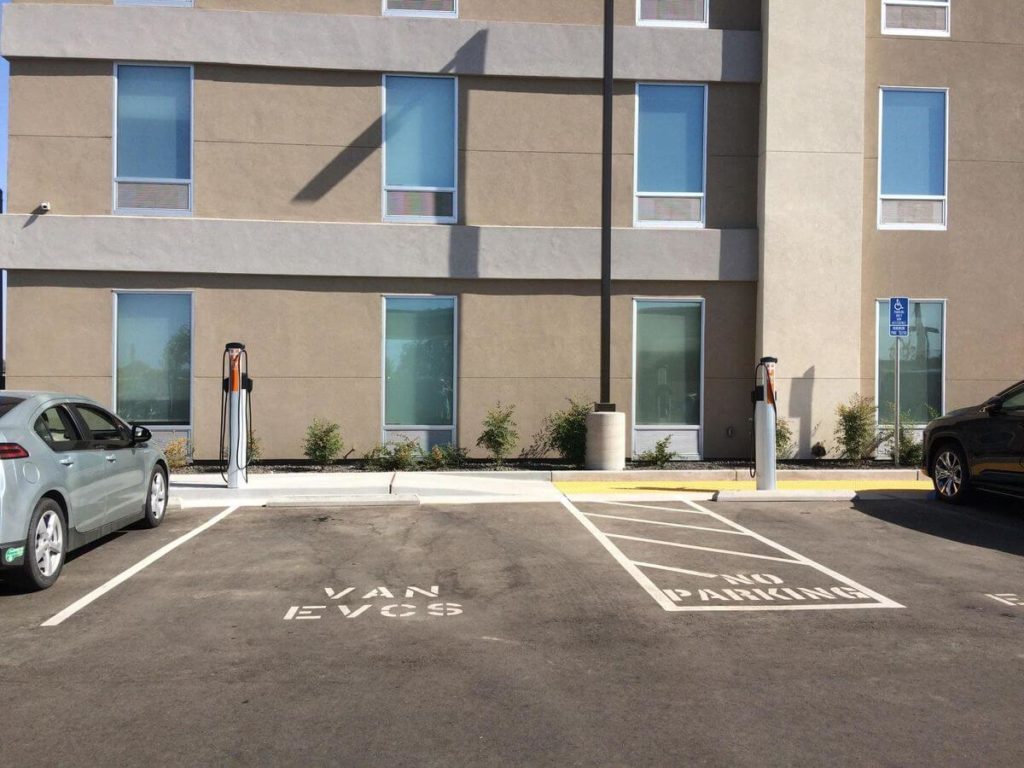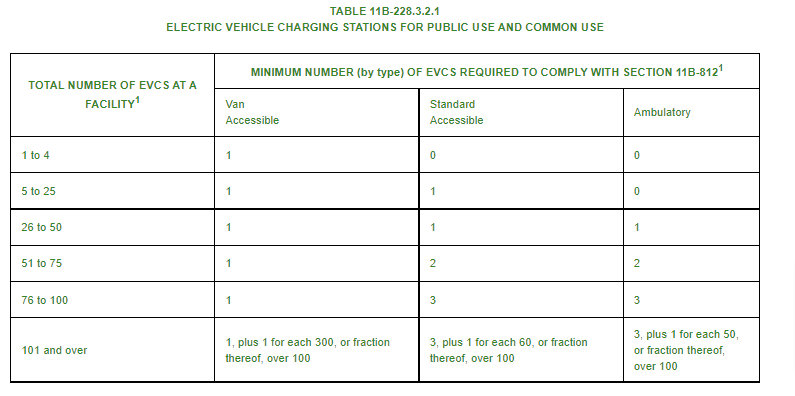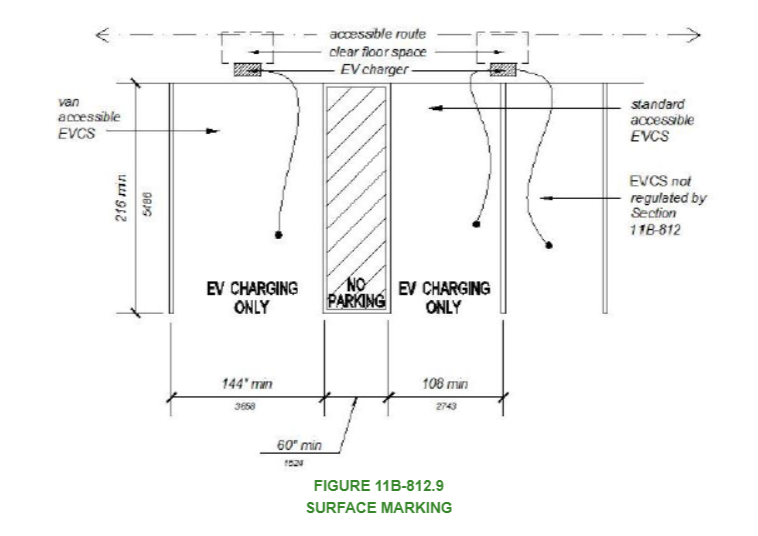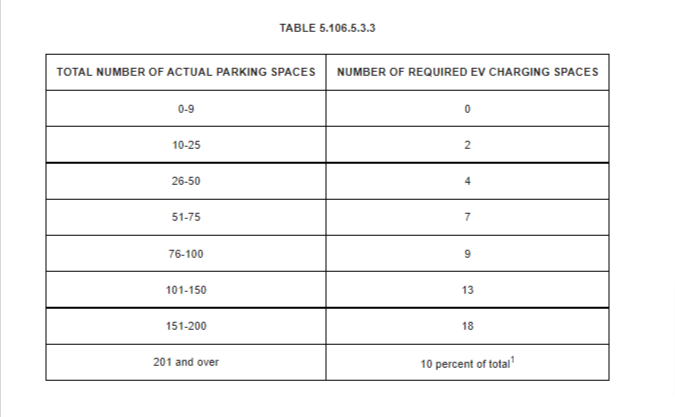There are several EV charging station regulations in California. Each of these was implemented by various government agencies in effort to better facilitate the installation of charging stations for all persons. That being said, it is critical to know about each one as they can impact both the scope of work and the cost of the project.
Here are the notable regulations that apply to nearly all new commercial or publicly accessible EV charging station projects in California:
- Americans with Disabilities (ADA)
- California Division of Measurement Standards
- California Green Building Standards
Check out the below sections as we provide an overview of each of these EV charging station regulations and discuss how they can impact your project in California.
Americans with Disabilities Act (ADA)
ADA is the most important one to know about. ADA was adopted in 1990 in efforts to provide equal access and facilitation for individuals with disabilities.
“Accessibility” is the combination of various elements in a building or area which allows access, circulation, and the full use of the building and facilities by persons with disabilities.
-California Division of the State Architect
While electric vehicles (EVs) and EV charging stations had yet to hit the mainstream market, ADA encompasses all types of commercial and public buildings, product function, and amenities. Today, EV charging stations are considered site amenities like drinking fountains or restrooms, therefore, they must be installed with accessibility in mind.
Since 2013, California has further defined how to implement accessible EV charging stations for new installations. As such, there are two main components:
- Accessible parking and use of the charger
- Accessible path of travel from the charger to the building

To the first component of accessibility, the EV space must have a certain amount of van, standard, and ambulatory spaces with their designated loading aisles. The amount of these types of accessible spaces is determined by the total number of provided EV charging stations. As you can see in the chart below, there must always be at least one accessible charging station.

To the second component of accessibility, there must be a path of travel from the charger to the building. The path of travel must be within a particular tolerance of slope and occasionally require the installation of ramps, landings, and handrails. However, in certain circumstances, the path of travel improvements may be waived or limited.

For any ADA clarifications or assistance, it is highly recommended to reach out to a licensed architect. They will be able to assist you throughout the permitting process. This information is merely for initial thought during the planning process.
California Division of Measurement Standards
Starting January 1, 2021, all new commercial EV charging stations must comply with the California Division of Measurement Standard EVSE requirements.
S.1.1. Electric Vehicle Supply Equipment (EVSE). – An EVSE used to charge electric vehicles shall be of the computing type and shall indicate the electrical energy, the unit price, and the total price of each transaction. (a) EVSEs capable of applying multiple unit prices over the course of a single transaction shall also be capable of indicating the start and stop time, the total quantity of energy delivered, the unit price, and the total price for the quantity of energy delivered during each discrete phase corresponding to one of the multiple unit prices. (b) EVSEs capable of applying additional fees for time-based and other services shall also be capable of indicating the total time measured; the unit price(s) for the additional time-based service(s); the total computed price(s) for the time measured; and the total transaction price, including the total price for the energy and all additional fees.
California Division of Measurement Standards
In essence, California now views charging stations as if they are gas stations, which is fair reasoning since both dispense energy to a vehicle. Furthermore, the days of charging EV drivers an amount of money per time of use is no longer allowed. If payment is required, it must be per unit of electricity (just like how gas stations charge per unit of gasoline or diesel).
Lastly, each of these commercial charging stations must be annually inspected by the local jurisdiction’s Weights and Measures Department. After each inspection, the inspector will apply a seal of certification, which notifies the public the charger is appropriately scaled. This type of inspection is conducted at gas stations as you may have noticed. Site hosts will need to account for this annual inspection and associated fees.
California Green Building Standards
Per the California Building Standards Commission, “The California Green Building Standards Code—Part 11, Title 24, California Code of Regulations—known as CALGreen, is the first-in-the-nation mandatory green building standards code. In 2007, CBSC developed green building standards in an effort to meet the goals of California’s landmark initiative AB 32, which established a comprehensive program of cost-effective reductions of greenhouse gases (GHG) to 1990 levels by 2020.”
As such, EV charging stations made its way into the code beginning in 2013. Each code cycle (every three years), has increased its EV charging requirements for new developments. Currently, the 2019 code requires new commercial developments to install infrastructure for future EV charging station installations. The infrastructure shall include underground conduit and appropriate load capacity and breaker space in the electrical panel.
The amount of future EV spaces is calculated based on the total number of parking spaces as shown in the table below.

Again, it is best to check with your architect to determine how the building code applies to your EV charging station project.
Local Jurisdiction Requirements
In some cases, further requirements may apply. Some local jurisdictions, such as the City of San Luis Obispo and the City of Fremont, require the installation of charging stations at new developments. These zoning ordinances go “above and beyond” the California Building Code, which only require infrastructure for future installations. In any case, it is best to check with your local jurisdiction to see if there are such ordinances in effect.
Closing Thoughts
As you can see, there are several hoops to jump through in order to install EV charging stations in California. While it may seem burdensome at times, at the end of the day these EV charging station regulations help EV drivers of all kinds.
It is critical to consider all of these regulations during the planning phase of the project to ensure they are implemented correctly. Failure to do so may result in fines and/or lawsuits.
Should you need any assistance with these regulations, feel free to reach out to us! As an EV charging consultant, we can assist with your EV charging project throughout the entire process.

Hi there! I’m the founder and project manager at Charged Future: the EV charging consultancy. Charged Future helps businesses achieve their EV charging goals. Specifically, I serve as the project manager for your EV charging project, which can save you both time and money! Additionally, I can search and apply to all eligible rebate applications, which can typically cover a large portion of the project cost.

